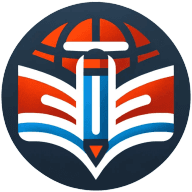7 Ways to Successfully Integrate EdTech into Traditional Lessons
Educational technology is transforming classrooms, but integrating it effectively into traditional lessons requires strategic planning. This article explores seven practical approaches that teachers are using to blend digital tools with established teaching methods, drawing on insights from experienced educators in the field. From replacing paper assessments with video submissions to using AI platforms for deeper learning, these methods show how technology can enhance rather than replace traditional instruction.
Video Submissions Replace Paper-Based Spanish Assessments
I integrated technology into my traditional Spanish language curriculum by having students create short videos using Flipgrid and submit them through Google Classroom, which transformed a previously paper-based assessment method. For end-of-unit assessments, I implemented game-based platforms like Blooket and Gimkit instead of standard written tests. The most surprising outcome was not just the significant increase in student engagement, but how these digital tools actually strengthened learning reinforcement in ways that traditional methods hadn't achieved previously.

AI Platforms Transform Memorization Into Applied Learning
Traditionally, lessons focused on memorization — reading from the textbook, taking notes, and preparing for exams. It worked in an era when information was scarce, but in today's world of instant access and AI, that model no longer helps students think, create, or apply what they learn.
This is where AI platforms like TeachBetter.ai are helping educators rethink how learning happens. Thousands of teachers are now using TeachBetter.ai to teach the same concept in multiple ways — through stories, jingles, real-life examples, visuals, videos, projects, activities, and assessments — ensuring that every student, regardless of learning style, understands deeply and can apply that knowledge in real life.
For example, a teacher explaining Newton's Laws might generate a story around football, use a simulation to visualize motion, and assign a creative project to demonstrate action and reaction.
The most surprising outcome teachers share isn't just better grades — it's engagement. Students are more curious, parents are hearing thoughtful explanations instead of memorized answers, and classrooms are becoming spaces of exploration.
That's the real power of modern AI powered EdTech platforms — helping schools move from memorization to application, and making learning more human again.

Physical Manipulatives Merge With Digital Simulations
Combining hands-on physical materials with digital tools creates a balanced learning experience that appeals to different types of learners. Traditional manipulatives like blocks, counters, and models help students grasp concrete concepts through touch and movement. When paired with digital simulations and interactive software, these physical tools become even more powerful teaching aids.
This blended approach allows students to explore ideas in multiple ways, strengthening their understanding of difficult topics. The mix of old and new methods prevents over-reliance on screens while still harnessing the benefits of technology. Educators should look for opportunities to connect tactile learning experiences with digital resources in their lesson plans.
Professional Development Builds Educator Technology Confidence
Teacher training and professional development serve as the foundation for successful EdTech integration in classrooms. Without proper preparation, even the best technology tools can fall flat or cause frustration among educators. Schools should invest in ongoing workshops that help teachers become comfortable with new digital platforms and understand how to use them effectively.
These training sessions should focus on practical applications rather than just technical features. When teachers feel confident with technology, they can better guide their students and troubleshoot problems as they arise. Schools and districts should prioritize regular professional development opportunities that keep educators updated on the latest educational technology trends and best practices.
Adaptive Software Personalizes Instruction For Every Student
EdTech platforms make it easier to meet the diverse needs of every student in a classroom. Differentiated instruction involves adjusting content, process, and assessment based on individual student abilities and learning styles. Technology tools can automatically adapt difficulty levels, provide immediate feedback, and offer alternative ways to demonstrate knowledge.
Students who need extra support can access additional tutorials and practice, while advanced learners can explore enrichment activities. This personalized approach helps ensure that no student is left behind or held back. Teachers should explore adaptive learning software that tailors instruction to each student's unique needs and pace.
Interactive Quizzes Provide Instant Feedback And Data
Digital assessments offer immediate feedback and engagement that traditional paper worksheets cannot match. Interactive quizzes and online exercises often include game-like elements that make practicing skills more enjoyable for students. These tools automatically grade responses and provide instant results, saving teachers valuable time while helping students identify areas for improvement right away.
Digital formats also allow for multimedia questions that incorporate images, videos, and audio to assess understanding in dynamic ways. Many platforms track student progress over time, giving teachers detailed data to inform their instruction. Schools should transition to interactive assessment tools that make evaluation more efficient and engaging for everyone involved.
Pre-Recorded Lectures Free Class Time For Collaboration
The flipped classroom model transforms how students engage with lesson content by moving direct instruction outside of class time. Students watch pre-recorded video lectures at home, working at their own pace and rewinding sections they find challenging. This approach frees up classroom time for hands-on activities, group work, and personalized help from the teacher.
Students come to class already familiar with basic concepts, ready to apply their knowledge through collaborative projects and problem-solving exercises. The teacher can spend more one-on-one time with students who struggle while others work independently or in groups. Educators should consider creating or curating video content that students can access before coming to class for deeper learning experiences.

